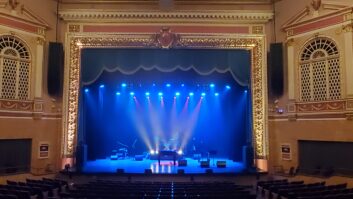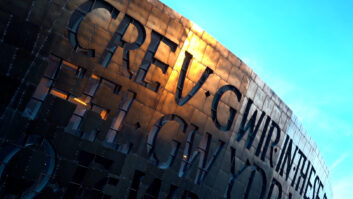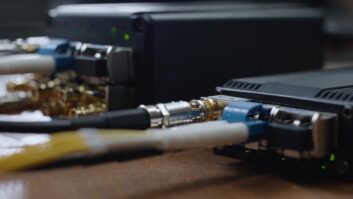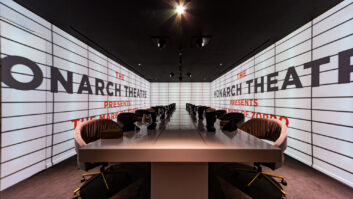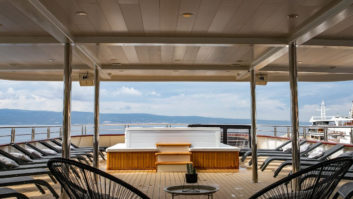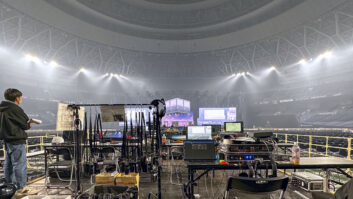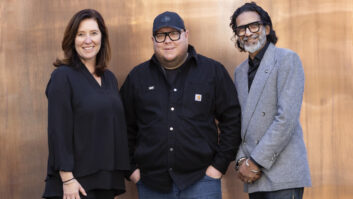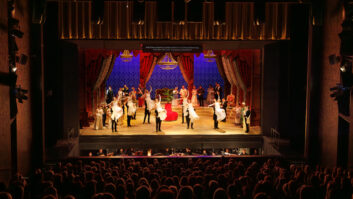The National Theatre in London is the latest organisation to adopt Riedel Communications’ all-new DisTag distance monitoring device. Worn around the neck or carried in a pocket, DisTag immediately alerts the wearer via haptic, visual, and acoustic signals whenever the mandatory minimum distance to other people is about to be breached. The National Theatre has deployed a total of 220 DisTag devices to help creative teams, and technical and production crews maintain a safe distance during rehearsal, fit-up or maintenance.
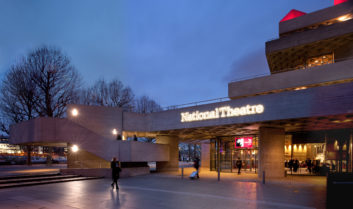 “As we begin to restart our operations, it’s critical to ensure that our performers, creatives, and technical staff can work as safely as possible and observe proper social distancing. DisTag is a reliable and precise way to meet those objectives,” said Dominic Bilkey, head of sound and video at the National Theatre. “DisTag has enabled our teams to confidently return to the rehearsal room. Everyone shares a common responsibility for social distancing, which is reinforced by the DisTag’s presence. The act of collecting the device provides a welcome reminder whilst its audible and haptic alerts reinforce this safety mindset.”
“As we begin to restart our operations, it’s critical to ensure that our performers, creatives, and technical staff can work as safely as possible and observe proper social distancing. DisTag is a reliable and precise way to meet those objectives,” said Dominic Bilkey, head of sound and video at the National Theatre. “DisTag has enabled our teams to confidently return to the rehearsal room. Everyone shares a common responsibility for social distancing, which is reinforced by the DisTag’s presence. The act of collecting the device provides a welcome reminder whilst its audible and haptic alerts reinforce this safety mindset.”
DisTag features a compact and minimalist design, making it ideal for media and event production as well as public and cultural institutions such as the National Theatre. The device offers three signal levels: a vibration alarm, a three-stage LED signal, and a three-stage sound signal. The proximity limits of the warning signals can be individually defined and adjusted in accordance with local regulations for social distance. In addition, individual tags can be divided into compatible groups using the Friendly Function, which prevents alarms when users in the groups come into close contact with each other.
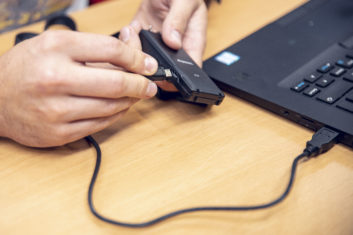 “We created DisTag as a simple yet elegant tool for helping organisations of all types start returning to some sense of normalcy after many months of quarantine and other coronavirus restrictions,” Nacho Lee, UK sales manager, Riedel Communications. “It’s great to see it already being embraced by some of our most storied cultural institutions, such as the National Theatre. We’re very happy that our technology is playing such a key role in this effort.”
“We created DisTag as a simple yet elegant tool for helping organisations of all types start returning to some sense of normalcy after many months of quarantine and other coronavirus restrictions,” Nacho Lee, UK sales manager, Riedel Communications. “It’s great to see it already being embraced by some of our most storied cultural institutions, such as the National Theatre. We’re very happy that our technology is playing such a key role in this effort.”
